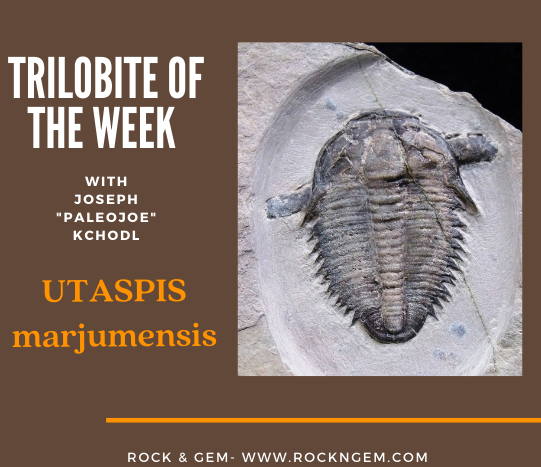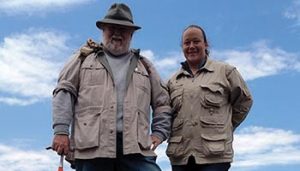
The trilobite pictured is lying atop a small bryozoan branch. It would be very difficult to remove the branch without damage to this very fine UTASPIS
This trilobite is one of the Cambrian trilobites commonly found in the House Range of Millard County, Utah, which is famous for producing many Cambrian trilobites. It is roughly oval in shape, and the eyes are quite small.
The cephalon, or head section, ends in two angular genal spines. It has a very small pygidium, or tail section, and the thorax segments all end in a small spine. Typically, these trilobites reach 2 inches in length.
DID YOU KNOW: Trilobites, an extinct form of arthropod related to insects, crabs, crayfish, and horseshoe crabs, are among the most prevalent invertebrates with hard body parts to appear during the Cambrian Period. These creatures are called trilobite due to the three distinct “lobes” running vertically through the body section.

About the columnist: Joseph “PaleoJoe” Kchodl is a paleontologist, educator, veteran, author, fossil dig organizer/guide, business owner, husband, father, and grandfather, and fossil fanatic. For decades, he’s spent hours in classrooms around the Midwestern United States and beyond, speaking to school children about fossils and fossil hunting. Visit his site to purchase fossils, contact PaleoJoe, visit www.paleojoe.com.
Plus, learn more about PaleoJoe and his daughter PaleoJen and their paleontology exploration partnership in an the article “Fueling a Passion for Paleontology“.
If you enjoyed what you’ve read here we invite you to consider signing up for the FREE Rock & Gem weekly newsletter. Learn more>>>
In addition, we invite you to consider subscribing to Rock & Gem magazine. The cost for a one-year U.S. subscription (12 issues) is $29.95. Learn more >>>















